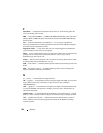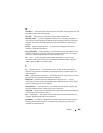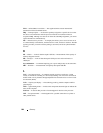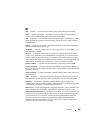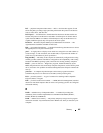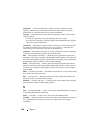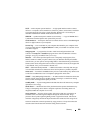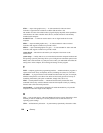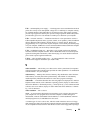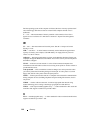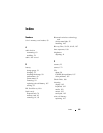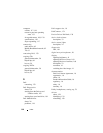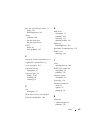
210 Glossary
SVGA — super-video graphics array — A video standard for video cards and
controllers. Typical SVGA resolutions are 800 x 600 and 1024 x 768.
The number of colors and resolution that a program displays depends on the capabilities
of the monitor, the video controller and its drivers, and the amount of video memory
installed in the computer.
S-video TV-out — A connector used to attach a TV or digital audio device to the
computer.
SXGA — super-extended graphics array — A video standard for video cards and
controllers that supports resolutions up to 1280 x 1024.
SXGA+ — super-extended graphics array plus — A video standard for video cards and
controllers that supports resolutions up to 1400 x 1050.
system board — The main circuit board in your computer. Also known as the
motherboard.
system setup — A utility that serves as an interface between the computer hardware and
the operating system. System setup allows you to configure user-selectable options in the
BIOS, such as date and time or system password. Unless you understand what effect the
settings have on the computer, do not change the settings for this program.
T
TAPI — telephony application programming interface — Enables Windows programs to
operate with a wide variety of telephony devices, including voice, data, fax, and video.
text editor — A program used to create and edit files that contain only text; for example,
Windows Notepad uses a text editor. Text editors do not usually provide word wrap or
formatting functionality (the option to underline, change fonts, and so on).
TPM — trusted platform module — A hardware-based security feature that when
combined with security software enhances network and computer security by enabling
features such as file and e-mail protection.
travel module — A plastic device designed to fit inside the module bay of a portable
computer to reduce the weight of the computer.
U
UAC — user account control— Microsoft Windows® Vista™ security feature that, when
enabled, provides an added layer of security between user accounts and access to
operating system settings.
UMA — unified memory allocation — System memory dynamically allocated to video.



